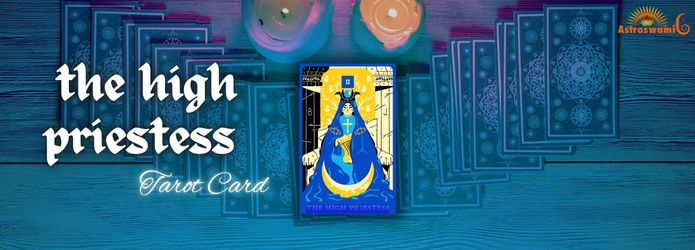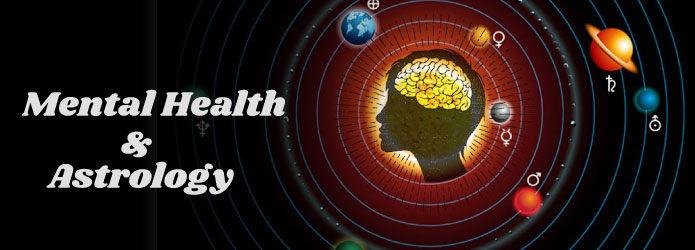
The High Priestess is the second card of the Major Arcana in the Tarot deck and is known for representing intuition, hidden knowledge, and spiritual insight. She is a symbol of the divine feminine, embodying mystery, stillness, and the pursuit of inner wisdom. Unlike the Magician, who is outwardly active and represents manifesting desires in the physical realm, the High Priestess encourages us to turn inward, trust our intuition, and seek answers within the spiritual and unconscious realms.
In this detailed article, we will explore the rich symbolism of the High Priestess card, its interpretations in different Tarot readings, its astrological associations, and the practical applications of its messages in everyday life. We will also look into how the card can help guide us in times of uncertainty or when we need to tap into our deeper wisdom.
The Tarot deck is composed of two parts: the Major Arcana, which deals with spiritual and life-altering events, and the Minor Arcana, which focuses on everyday happenings. The High Priestess is the second card of the Major Arcana and represents the divine feminine, the unseen world, and the power of intuition.
While the Magician (Card I) represents the power to act and shape the world around us, the High Priestess (Card II) represents the power of inner knowing and the unseen forces that shape reality. She does not act directly but is deeply connected to the spiritual and subconscious realms, embodying the idea that sometimes the answers lie within, waiting to be uncovered.
The High Priestess Tarot card is filled with symbolism that conveys her deep connection to the spiritual and mystical realms. The most common imagery associated with the High Priestess includes:
1. The Veil and the Pillars
The High Priestess is often seated between two pillars, which are usually labeled Boaz (B) and Jachin (J). These pillars are symbolic of the entrance to Solomon’s Temple and represent the dualities of life—dark and light, masculine and feminine, conscious and unconscious. The black pillar (Boaz) stands for severity, while the white pillar (Jachin) stands for mercy, showing that balance is needed to enter deeper wisdom.
Behind the High Priestess, there is usually a veil adorned with pomegranates and palms, symbolizing the boundary between the conscious and subconscious mind, or the physical and spiritual worlds. The veil represents hidden truths, and only those who seek spiritual insight and inner knowledge can cross it.
2. The Moon and Water
The crescent moon at the feet of the High Priestess and her crown often associated with the Triple Goddess (symbolizing the waxing, full, and waning moon) signify the connection to the lunar cycles, intuition, and the feminine. The moon is also a symbol of the subconscious, psychic abilities, and emotions.
The flowing water in many depictions of the card represents the flow of consciousness, emotions, and the unseen knowledge that comes from within. The High Priestess, seated between these symbols, encourages us to tap into our inner waters of intuition and emotions to find the answers we seek.
3. The Scroll and the Cross
In the High Priestess’ lap, she often holds a scroll labeled TORA, a reference to divine law and sacred knowledge (sometimes seen as a reference to the Torah or esoteric wisdom). The scroll is only partially visible, signifying that all knowledge is not immediately accessible but must be sought through contemplation and spiritual practice.
The cross on her chest further emphasizes the balance between the material and spiritual worlds, representing harmony and the integration of opposites.
4. The Color Scheme
The dominant colors of the High Priestess card are blue, white, and silver, which symbolize purity, wisdom, and the connection to the spiritual realm. Blue is often associated with calmness and the depth of the subconscious, while white reflects purity and clarity.
The High Priestess is one of the most enigmatic and powerful cards in the Tarot, and her meaning can change depending on the context of the reading. At its core, the card is a symbol of intuition, hidden knowledge, and the need to listen to one’s inner voice.
1. Intuition and Inner Wisdom
The High Priestess urges us to trust our intuition and inner voice. She is a reminder that the answers we seek are often within, and that we need to take time to reflect and listen to our subconscious. If you draw this card, it may suggest that you are being called to pay attention to your gut feelings and emotions, as they are guiding you toward the truth.
2. Secrets and Hidden Knowledge
As a keeper of mysteries, the High Priestess often appears in readings to suggest that something is being hidden or is yet to be revealed. This could be hidden feelings, undisclosed information, or spiritual knowledge that has not yet come to light. It encourages you to remain patient and to be open to the unknown. The card suggests that all will be revealed in time but only to those who seek wisdom sincerely.
3. Balance and Patience
The High Priestess is also a symbol of balance, particularly between the material and spiritual worlds. She reminds us that we need both intellect and intuition to navigate life successfully. Her presence in a reading can suggest that you need to find balance in your life—perhaps between work and rest, or logic and emotion.
The card also signifies patience. Just as she sits calmly between the pillars of light and dark, she encourages us to adopt a meditative, reflective stance and avoid rushing into decisions without first gathering all necessary information.
4. Spiritual Growth
For those on a spiritual journey, the High Priestess is a powerful card that signals the importance of deepening your spiritual practices. Whether it’s meditation, prayer, or study, the High Priestess encourages you to explore the mysteries of the universe and seek knowledge beyond the physical realm. She represents the Divine Feminine, spiritual wisdom, and the mysteries of life.
When the High Priestess appears reversed in a Tarot reading, it can indicate several challenges or blockages related to intuition, secrets, and inner knowing. The reversed position alters the energy of the card, often pointing to an imbalance or difficulty in connecting with one’s higher self.
1. Blocked Intuition
A reversed High Priestess can suggest that you are ignoring your intuition or struggling to connect with your inner voice. You may be relying too much on external advice or logic, rather than trusting your gut feelings. The card is a warning that you need to take time to tune into your inner world and listen to the subtle signs that your subconscious is giving you.
2. Hidden Secrets
When reversed, the High Priestess can indicate that there are secrets or deception at play in your life. Someone may be hiding important information from you, or you may be keeping something from others. In this case, the card advises caution and encourages you to seek the truth before making any major decisions.
3. Emotional or Spiritual Turbulence
The reversed High Priestess can also reflect a sense of emotional or spiritual confusion. You may feel disconnected from your higher self, overwhelmed by emotions, or unsure of your spiritual path. It’s important to ground yourself, engage in practices that nurture your inner world, and be patient as you navigate through this period of uncertainty.
The High Priestess card is associated with the Moon and the water element, both of which emphasize intuition, emotions, and the subconscious mind. These associations give the High Priestess her deep connection to psychic abilities, dreams, and the mysteries of the unknown.
1. The Moon
In astrology, the Moon rules over the subconscious, emotions, instincts, and intuition. The High Priestess, like the Moon, is deeply tied to these realms, encouraging us to trust our gut feelings and explore the hidden depths of our psyche. The phases of the Moon also suggest cycles of change and the ebb and flow of knowledge—just as the Moon waxes and wanes, so too do our intuitive abilities and understanding of the world.
2. Water Element
Water is the element of emotions, intuition, and the subconscious. The High Priestess, with her flowing water and connection to the Moon, represents the fluidity of emotions and the depth of spiritual wisdom. Water is a reminder of the unseen currents that run through our lives, urging us to look beyond the surface and explore the deeper meanings behind events and feelings.
The meaning of the High Priestess card can change depending on its position in a Tarot spread. Here are some common interpretations based on placement:
1. Past Position
When the High Priestess appears in the past position, it suggests that you have recently experienced a period of introspection, mystery, or spiritual growth. You may have uncovered a hidden truth, trusted your intuition in a critical situation, or connected deeply with your inner wisdom. The card serves as a reminder that your past experiences have contributed to your current spiritual and emotional state.
2. Present Position
In the present position, the High Priestess indicates that you are in a time of reflection and introspection. You may be seeking answers to questions that cannot be found through logic alone and are being called to trust your instincts. This card encourages you to pause and look inward before taking action.
3. Future Position
When appearing in the future position, the High Priestess foretells a period of spiritual awakening, hidden knowledge, or mysteries to be uncovered. It suggests that soon, you will need to rely on your intuition and inner knowing to navigate upcoming challenges. Secrets or unknown information may come to light, and you will need to approach situations with patience and wisdom.
The High Priestess card is not just a symbol of mystery and spirituality—it offers practical guidance that can be applied to daily life. Here are some ways to harness the energy of the High Priestess:
1. Trusting Your Intuition
The High Priestess teaches us to trust our inner voice. Whenever you are faced with a decision or challenge, take time to meditate, reflect, and listen to what your intuition is telling you. Often, the answers we seek are already within us.
2. Embracing Stillness and Silence
The High Priestess encourages periods of stillness and silence. In our busy lives, it's easy to overlook the power of quiet contemplation. Set aside time each day to disconnect from external distractions and connect with your inner self through meditation, journaling, or simply sitting in silence.
3. Exploring Hidden Knowledge
This card invites you to explore the mysteries of life. Whether through spiritual practices, studying esoteric wisdom, or developing your psychic abilities, the High Priestess calls you to dive deeper into the unknown and embrace the hidden truths of the universe.
The High Priestess Tarot card is a powerful symbol of intuition, mystery, and divine wisdom. She encourages us to trust our inner voice, seek hidden knowledge, and embrace the mysteries of life. Whether appearing upright or reversed, the High Priestess offers profound insights into the spiritual and subconscious realms, guiding us toward deeper understanding and self-awareness.
Also Read:-The Magician card is a symbol of personal power, manifestation

Many festivals are celebrated in India and Shardiya Navratri festival has a great historical background....

The mind is represented by moon, its placement, condition and afflictions in the birth chart. ...

Sawan Shivratri 2022 - Holy month of Sawan is going on. This month, Shivaratri is considered special....

Tirupati Balaji Temple is one of the richest temples located in Andhra Pradesh....